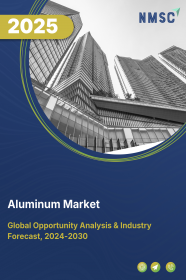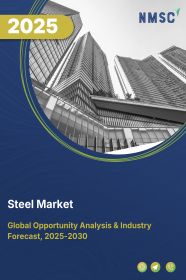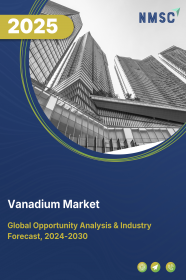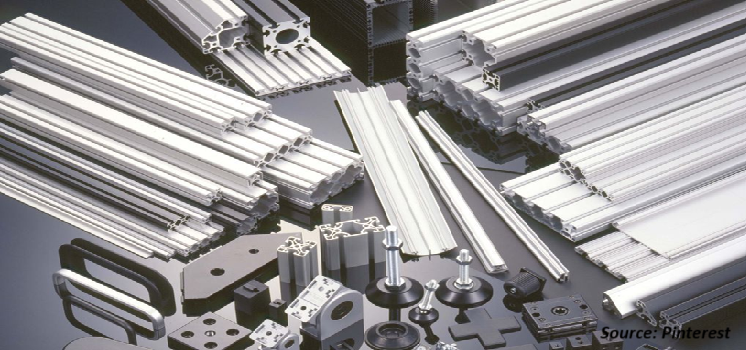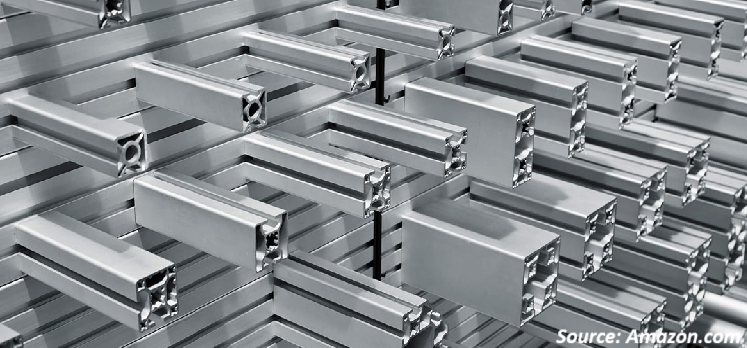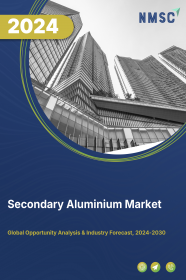
Secondary Aluminum Market by Source of Aluminum (Post-Consumer Scrap and Industrial Scrap), by Alloy Type (Cast Aluminum Alloys and Wrought Aluminum Alloys), by Purity Level (High Purity Aluminum and Standard Purity Aluminum), and End User (Transport, Consumer Goods, Machinery & Equipment, Construction, Foil and Packaging, Electrical Engineering, and Other End User) – Global Opportunity Analysis and Industry Forecast 2024-2030
Industry: Materials and Chemical | Publish Date: 27-May-2025 | No of Pages: 360 | No. of Tables: 288 | No. of Figures: 233 | Format: PDF | Report Code : MC1373
US Tariff Impact on Secondary Aluminum Market
Trump Tariffs Are Reshaping Global Business
Industry Overview
The global Secondary Aluminum Market size was valued at USD 96.87 billion in 2023 and is predicted to reach USD 160.53 billion by 2030 with a CAGR of 6.8% from 2024-2030. Secondary aluminum refers to aluminum that is produced through the recycling and reprocessing of aluminum scrap rather than being extracted directly from bauxite ore using primary aluminum production methods.
The process of obtaining secondary aluminum typically involves collecting aluminum scrap from discarded products, manufacturing waste, and other sources. This scrap is then melted in a furnace, where impurities are removed to produce recycled aluminum.
Recycled aluminum offers a range of advantages, making it a sustainable and resource-efficient material. This provides less carbon emissions and waste reduction, which contributes to a lower overall environmental impact. Additionally, the use of secondary aluminum promotes a circular economy by extending the life cycle of the material and reducing the overall demand for new primary aluminum production.
Market Dynamics and Trends
The increasing governmental efforts to reduce carbon emissions and promote sustainability are encouraging industries to embrace secondary aluminum. This compliance motivates businesses to integrate recycled materials into their operations, aligning with eco-friendly practices. For instance, in February 2024, the Bureau of International Recycling initiated the Global Recycling Foundation (GRF), which aims to utilize artificial intelligence (AI) technology to advance the recycling industry. This initiative aims to enhance efficiency in sorting and processing recyclable materials, including secondary aluminum, leading to increased sustainability and resource conservation in the secondary aluminum market.
Also, the increasing demand for recycled aluminum in the automotive and transportation industries to produce items such as aluminum sheets and alloys is fueling growth in the secondary aluminum market. According to the International Aluminium Institute (IAI), the global Recycling Efficiency Rate (RER) of aluminum is currently 76%, which accounts for the total amount of recycled aluminum produced annually from new scrap and old scrap. The transportation sector recycles the highest proportion of aluminum products, accounting for 86% of total aluminum materials recycled.
However, the availability and competitive pricing of alternative materials, including steel and plastic, further affect the demand for secondary aluminum is further hindering the market expansion. On the contrary, the integration of robotics and automation solutions into secondary aluminum facilities to streamline operations such as material handling, sorting, and processing is expected to create ample growth opportunities for the market. Automated systems improve productivity, reduce labor costs, and enhance workplace safety.
Market Segmentation and Scope of Study
The secondary aluminum market is divided based on the source of aluminum, alloy type, purity level, end user, and region. Based on the source of aluminum, the market is divided into post-consumer scrap and industrial scrap. Based on alloy type, the market is categorized into cast aluminum alloys and wrought aluminum alloys. Based on purity level, the market is segmented into high-purity aluminum and standard-purity aluminum. Based on end users, the market is segmented into automotive, aerospace and defense, building and construction, packaging industry, electrical utilities, and other end users. Regional breakdown and analysis of each of the aforesaid segments includes regions comprising North America, Europe, Asia-Pacific, and RoW.
Geographical Analysis
Asia-Pacific holds the dominating share of the secondary aluminum market at present and is expected to continue its dominance throughout the forecast period. This is attributed to factors such as the growing production of secondary aluminum among developed countries such as China, India, and Japan.
According to a report published by Japan Aluminium Association, the total amount of secondary aluminum production is recorded at 669.8 thousand metric tons in the year 2023, with a growth of 0.8% as compared with 664.8 thousand metric tons in 2022.
Also, the growing automotive sector in the Asia Pacific, particularly in countries such as China and India, is propelling the growth of the secondary aluminum market. This material is preferred for vehicle manufacturing due to its lightweight, durable, and environmentally friendly properties.
According to the International Trade Administration, China is the largest automotive vehicle producer, with domestic production expected to reach 35 million automotive vehicles by the year 2025. With the rise in automotive production, the demand for secondary aluminum also grows, playing a significant role in the automotive sector's progress.
On the other hand, North America is considered the fastest-growing region in the secondary aluminum industry, propelled by countries such as the United States and Canada. Their robust emphasis on metal recycling, particularly aluminum, acts as a significant driver for the market's expansion in the region.
According to the International Aluminum Institute (IAI), 57% of the total aluminum metal produced in North America originated from scrap materials, making it the highest Recycling Input Rate (RIR) in the world.
Moreover, the presence of key market players including Novelis Inc. and Alcoa Corporation that are adopting various business strategies including investment and business expansion is boosting the market growth in the region. These companies play a crucial role in driving advancements, innovation, and market expansion within the secondary aluminum sector in North America.
For instance, in October 2022, Novelis Inc., the U.S. subsidiary of an India-based secondary aluminum material producer, announced an investment of USD 2.5 billion for installing a new secondary smelter in Alabama. This facility aims to produce 600,000 tons of aluminum annually and is designed to be the first fully integrated aluminum mill built in the U.S.
Competitive Landscape
Various players in the secondary aluminum industry include Constellium, Hindalco Industries Limited, Norsk Hydro ASA, Rio Tinto, Speira GmbH, AMAG Austria Metall AG, Alcoa Corporation, Audubon Metals LLC, State Metal Industries, Superior Aluminum Alloys, Eccomelt, Romco Group, Stemin S.p.A., Tennessee Aluminum Processors, STEINERT, and others. These companies are opting for various strategies, such as collaboration, to maintain their dominance in the global sector.
For instance, in April 2022, Alcoa collaborated with MMG Aluminium to recycle scrap aluminum metal from aluminum chips and briquettes. It installed an induction furnace that efficiently melts these briquettes for blending with the smelter’s low-carbon aluminum and various alloying materials, depending on the end-use applications.
Key Benefits
-
The report provides quantitative analysis and estimations of the secondary aluminum market from 2024 to 2030, which assists in identifying the prevailing market opportunities.
-
The study comprises a deep dive analysis of the current and future secondary aluminum market trends to depict prevalent investment pockets in the market.
-
Information related to key drivers, restraints, and opportunities and their impact on the secondary aluminum market is provided in the report.
-
A competitive analysis of the players, along with their market share, is provided in the report.
-
SWOT analysis and Porter's Five Forces model are elaborated in the study.
-
Value chain analysis in the market study provides a clear picture of the roles of stakeholders.
Secondary Aluminum Market Key Segments
By Source of Aluminum
-
Post-Consumer Scrap
-
Industrial Scrap
By Alloy Type
-
Cast Aluminum Alloys
-
Wrought Aluminum Alloys
By Purity Level
-
High Purity Aluminum
-
Standard Purity Aluminum
By End User
-
Transport
-
Consumer Goods
-
Machinery & Equipment
-
Construction
-
Foil and Packaging
-
Electrical Engineering
-
Other End User
By Region
-
North America
-
The U.S.
-
Canada
-
Mexico
-
-
Europe
-
Germany
-
France
-
Italy
-
Spain
-
United Kingdom
-
Russia
-
Sweden
-
Norway
-
Denmark
-
Netherlands
-
Finland
-
Rest Of Europe
-
-
Asia-Pacific
-
Australia
-
China
-
India
-
Japan
-
South Korea
-
Indonesia
-
Singapore
-
Taiwan
-
Thailand
-
Rest Of Asia-Pacific
-
-
RoW
-
Latin America
-
Middle East
-
Africa
-
Key Players
-
Constellium
-
Hindalco Industries Limited
-
Norsk Hydro ASA
-
Rio Tinto
-
Speira GmbH
-
AMAG Austria Metall AG
-
Alcoa Corporation
-
Audubon Metals LLC
-
State Metal Industries
-
Superior Aluminum Alloys
-
Eccomelt
-
Romco Group
-
Stemin S.p.A
-
Tennessee Aluminum Processors
-
STEINERT
REPORT SCOPE AND SEGMENTATION:
|
Parameters |
Details |
|
Market Size in 2023 |
USD 96.87 billion |
|
Revenue Forecast in 2030 |
USD 160.53 billion |
|
Growth Rate |
CAGR of 6.8% from 2024 to 2030 |
|
Analysis Period |
2023–2030 |
|
Base Year Considered |
2023 |
|
Forecast Period |
2024–2030 |
|
Market Size Estimation |
Billion (USD) |
|
Growth Factors |
|
|
Countries Covered |
28 |
|
Companies Profiled |
15 |
|
Market Share |
Available for 10 companies |
|
Customization Scope |
Free customization (equivalent to up to 80 working hours of analysts) after purchase. Addition or alteration to country, regional, and segment scope. |
|
Pricing and Purchase Options |
Avail customized purchase options to meet your exact research needs. |

















 Speak to Our Analyst
Speak to Our Analyst



